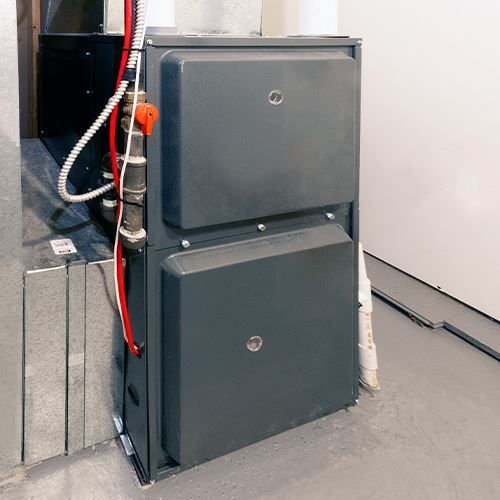Located in Everett, WA and serving both North King & Snohomish Counties.
Contact Our Experts Today!
Guide to Indoor Air Quality: Services that Actually Help
Better Air NW • Nov 25, 2022
Don’t Ignore Indoor Air Quality

It’s well known that outdoor air pollution can directly affect your health, but what about indoor air pollution? If you’re sensitive to air quality for any reason, investing in indoor air quality services can go a long way in improving your comfort at home.
How Does Indoor Air Quality Affect Your Health?
According to the Environmental Protection Agency, indoor air quality describes the quality of the air in and around your home. It’s affected by things like temperature, humidity, and how well your home is ventilated.
Airborne pollutants you can encounter in your home include dust, allergens, bacteria, mildew, and even mold. If you’ve ever ignored warning labels to use something outside or in properly ventilated areas, those chemical pollutants may have circulated through your HVAC system too.
If you’re coming in contact with these kinds of pollutants regularly, chances are you’ll start to feel it. On the mild side, you’ll feel some irritation in your eyes, nose, and throat. You may also start to have unexplained headaches, dizziness, and even fatigue.
Luckily, reducing your chances of exposure to indoor pollutants is as easy as regularly scheduled HVAC maintenance and cleaning. As a bonus, services that improve indoor air quality can also reduce utility bills! Clean HVAC systems just don’t have to work as hard to circulate air through your home.
Services That Improve Indoor Air Quality
Duct Cleaning
The easiest way to start improving your indoor air quality is to get your air ducts cleaned regularly. That makes sense, right? Your HVAC system uses those ducts to circulate air through your home, so naturally, a lot of pollutant buildup happens.
On average, we recommend getting your air ducts cleaned every 3-5 years. However, there are some reasons you may want to do it more often. If you’re sensitive to airborne allergens like pollen or pet dander, have asthma, or live in an area at risk of wildfires, you may benefit from doing it more frequently.
Here’s a breakdown of our duct cleaning process:
- Remove all large debris near the heat register with a shop vacuum.
- Seal the registers.
- Place each register under negative pressure with a Hypervac Negative Air Machine (big vacuum).
- Use two compressed air cleaning tools down the length of each register.
- Clean the main trunk lines that lead back to the furnace.
- Agitate and remove dust and debris from the blower motor, air handler and interior cage.
Air Filters + Purifiers
Air filters are the unsung heroes of your HVAC system. They should be changed every three months, but many people forget to change them until there’s already a problem. When it comes to dealing with indoor air pollutants, it’s your first line of defense.
Which air filter you use can make all the difference. MERV ratings report a filter’s ability to capture larger particles, but we’ve found that a higher score doesn’t necessarily relate to better performance. If your filter is doing too good of a job, it’ll clog quickly and make your HVAC system work harder to circulate air.
Another component that can improve your air quality is duct-mounted air purifiers. While air filters can catch larger particles like dust, air purifiers can eliminate mold, bacteria, and viruses circulating through your system.
We believe the Aprilaire 4” MERV 11 Filter with iWave-R will give you the best value for your money. The inclusion of the iWave-R increases the effectiveness of the filter by about 20% on average, with the added benefit of killing pathogens and reducing VOCs!
How’s Your Indoor Air Quality?
Managing your indoor air quality is important to keeping you and your family healthy and comfortable in your home. Luckily, it’s pretty easy to improve and can even help you save on your utility bills!
You can check out our indoor air quality services whenever you’re ready.
In The News

By Better Air NW
•
28 Jul, 2023
When it comes to home additions and renovations, finding the right HVAC solution can be challenging. Traditional ducted systems may not always be feasible or cost-effective. That's where ductless mini-splits come in. In this comprehensive guide, we will explore the benefits, installation process, and maintenance tips for ductless mini-splits, helping you make an informed decision for your home improvement project.
By Better Air NW
•
12 Oct, 2022
Is your furnace not producing enough heat, or maybe it even stopped working altogether? With winter on the way, that’s the last thing you want to deal with. Luckily, we’ve seen it all during our decade-plus of serving the Seattle area. This is why we’ve put together a little guide to help you troubleshoot some common furnace problems! Furnace is Making Weird Noises Snap, crackle, pop! Some noises coming from your furnace are totally normal, but others signal an issue you should get checked out ASAP. Here’s a quick guide to some common noises you might encounter and what’s causing them. Popping and Pinging – Don’t worry about the occasional pop and ping. What you’re hearing is the metal in your ductwork reacting to the temperature. It expands when heating and contracts when cooling. Rattling – A rattling noise can set you on edge, but it’s usually an easy fix. Rattling is most commonly a sign that a panel in your ductwork is loose. Once you find the problem panel, it’s as easy as tightening some nuts & bolts. Shrieking – While this one might make you feel like an extra in a horror movie, the reality is a lot less spooky. What you’re most likely hearing is a loose or broken blower belt. Unless you’re mechanically inclined, this one’s best left for an HVAC technician. Grinding or Scraping – If you’re hearing this, stop your system immediately! That’s probably the sound of worn-out ball bearings trying to move your fan motor. Forcing your furnace to run like this can lead to even more costly repairs. This is one that should absolutely be left to an HVAC technician. Air Filter is Too Dirty Your HVAC filter’s job is to catch particulate matter like dust or dander so that it doesn’t circulate through your house. If you haven’t changed your air filter in a long time, it gets so gunked up that even the air coming from your furnace fan can barely pass through. It’s like running into a brick wall. If you leave it for too long, it even has the potential to damage your HVAC system. It can damage the limit switch that controls your fan or even cause your system to overheat and shut itself down. Neither situation is something you want from this all-too-common furnace problem. Luckily, it’s an easy fix – just replace them! We recommend doing it every three months or so and even more frequently if you have pets or some other condition that may clog them faster. Thermostat is on the Fritz Checking out your thermostat is a great place to start when trying to troubleshoot common furnace problems. First things first – check that it’s on! It sounds silly, but there are a lot of ways it could get turned off without you knowing. It’s actually quite a common furnace problem. Not only that, but It could be that someone turned it off accidentally when messing with the settings or simply that the batteries died. If you’re content that the thermostat is on and working properly, dive into the settings. Here are some things to look for: Make sure the thermostat is set to “Heat.” Make sure the “Fan” setting is turned off. This blows air without heating it. Adjust the temperature setting on the thermostat if it’s too low. Pilot Light isn’t Working Right A pilot light is a small flame that ignites the gas in your furnace to turn it on and provide heat. We recommend you leave any repairs for your pilot light to professional HVAC Technicians due to the dangers of working with gas and flames. Older styles of pilot lights are always on. If the flame just isn’t catching, there are a few culprits we commonly look for with this common furnace problem. Sometimes it’s as simple as a draft that interferes during ignition, but other times it’s something mechanical. This could be a faulty thermocouple, a clogged pilot orifice, or even a defective safety switch. Mechanical issues can’t be caught without opening up your furnace, so you’ll need an HVAC technician to take a look. Newer styles of pilot lights have an electric igniter that turns on at the beginning of every cycle. They rely on a flame sensor, a critical safety feature that shuts the whole furnace down if it detects gas but no flames. If this sensor gets dirty, it won’t be able to see flames regardless and will shut everything down unnecessarily. Important Safety Information If you notice any changes to your pilot light, like flickering or yellowish color, get your local furnace technician to come out as soon as possible. These could potentially be signs of excessive carbon monoxide in your furnace. If you’re going to attempt to relight your pilot yourself, make sure to turn off your gas supply and wait at least a few minutes. If your pilot light has been out for some time, you could potentially have a dangerous build-up of gas around your unit. Always follow the instructions in your owner’s manual and understand the risks before attempting this work on your own. What You Can Do Yourself We love to help, and we’re always looking forward to your call, but there are some things you can do yourself to diagnose your HVAC issues that we consider common furnace problems. Here are some simple checks you can do to save yourself a service call: Make sure your furnace is plugged in. It doesn’t hurt to check! Take a look at your thermostat to ensure it’s on and set to the correct temperature and mode. Change your HVAC filters at least quarterly, if not more. Do a tour of your registers to make sure all are open and circulating air. Make sure your access panel is closed! Modern furnaces often have a safety feature that prevents your heater from running if it’s open. Check that the circuit breaker wasn’t tripped. If your furnace is causing it to trip, you’ll still want to call an HVAC technician. Need Your Furnace Repaired? If you’re running into these common furnace problems or any other, don’t be afraid to get on our schedule! As we’re approaching colder temperatures, the last thing you want is a malfunctioning heater. We’d be happy to help you diagnose and repair any issues with your heating system so you and your family can stay warm and comfortable through the winter.







